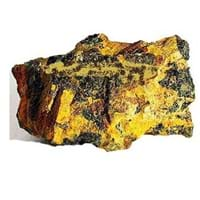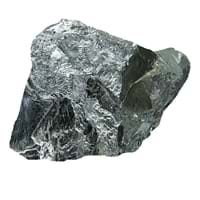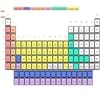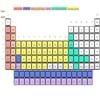Polonium vs Chromium
Periodic Table
Symbol
Po
Cr
Group Number
16
2
6
12
Period Number
6
4
Block
p block
d block
Element Family
Post-Transition
Transition Metal
CAS Number
7440086
99+
7440473
39
Space Group Name
Pm-3m
Im_ 3m
Space Group Number
221.00
3
229.00
1
Facts
Interesting Facts
- Polonium was the first radioactive element to be discovered.
- Polonium element and its compounds are highly radioactive.
- Its alloy with Beryllium provides source of neutrons.
- Chromium is highly reactive, hence it is not found free in nature.
- Ores of Chromites mineral are the major source of Chromium metal.
- Almost 90% leather tanning is done with the help of chromium.
Sources
Mining, Ores of metals
Found in Minerals, Mining, Ores of metals, Ores of Minerals
History
Who Discovered
Pierre Curie and Marie Curie
Louis Nicolas Vauquelin
Discovery
In 1898
In Between 1797 - 1798
Abundance
Abundance In Universe
Not Available
1.5 * 10-3 %
7
Abundance In Sun
~-9999 %
~0.002 %
7
Abundance In Meteorites
Not Available
0.30 %
7
Abundance In Earth's Crust
Not Available
0.01 %
13
Abundance In Oceans
0.00 %
99+
0.00 %
16
Abundance In Humans
Not Available
0.00 %
16
Uses
Uses & Benefits
- Polonium metal has different Allotropes, it is used in antistatic devices and for research purpose.
- A 1 gram of Polonium can reach a temperature of 500°C, hence it is used as a heat source for space equipment.
- It is used to harden the steel and produces a stainless steel and other various alloys.
- It is also used to give proper finish to polished mirrors. Its chromium plates are used in bathroom fittings.
Industrial Uses
Aerospace Industry, Ammunition Industry
Automobile Industry, Chemical Industry
Medical Uses
NA
NA
Other Uses
Alloys
Alloys
Biological Properties
Toxicity
Highly Toxic
Highly Toxic
Present in Human Body
No
Yes
In Blood
0.00 Blood/mg dm-3
37
0.11 Blood/mg dm-3
12
In Bone
0.00 p.p.m.
36
0.33 p.p.m.
21
Physical Properties
Melting Point
254.00 °C
99+
1,857.00 °C
14
Boiling Point
962.00 °C
99+
2,672.00 °C
39
Appearance
Physical State
Solid
Solid
Color
Silver
Silver
Luster
NA
Metallic
Hardness
Mohs Hardness
Not Available
8.50
1
Brinell Hardness
Not Available
687.00 MPa
16
Vickers Hardness
Not Available
1,060.00 MPa
10
Speed of Sound
Not Available
5,940.00 m/s
5
Optical Properties
Allotropes
Yes
No
α Allotropes
α-polonium
Not Available
β Allotropes
β-polonium
Not Available
γ Allotropes
Not Available
Not Available
Chemical Properties
Chemical Formula
Po
Cr
Isotopes
Known Isotopes
29
10
21
18
Electronegativity
Pauling Electronegativity
2.00
7
1.66
18
Sanderson Electronegativity
Not Available
1.66
14
Allred Rochow Electronegativity
1.76
2
1.56
10
Mulliken-Jaffe Electronegativity
2.48
1
Not Available
Allen Electronegativity
2.19
2
1.65
19
Electropositivity
Pauling Electropositivity
2.00
99+
2.34
36
Ionization Energies
1st Energy Level
812.10 kJ/mol
14
26,130.00 kJ/mol
1
2nd Energy Level
Not Available
28,750.00 kJ/mol
1
3rd Energy Level
Not Available
34,230.00 kJ/mol
1
4th Energy Level
Not Available
37,066.00 kJ/mol
1
5th Energy Level
Not Available
97,510.00 kJ/mol
1
6th Energy Level
Not Available
105,800.00 kJ/mol
1
7th Energy level
Not Available
114,300.00 kJ/mol
1
8th Energy Level
Not Available
125,300.00 kJ/mol
1
9th Energy Level
Not Available
134,700.00 kJ/mol
1
10th Energy Level
Not Available
144,300.00 kJ/mol
1
11th Energy Level
Not Available
26,130.00 kJ/mol
12
12th Energy Level
Not Available
28,750.00 kJ/mol
13
13th Energy Level
Not Available
34,230.00 kJ/mol
10
14th Energy Level
Not Available
37,066.00 kJ/mol
12
15th Energy Level
Not Available
97,510.00 kJ/mol
1
16th Energy Level
Not Available
105,800.00 kJ/mol
2
17th Energy Level
Not Available
114,300.00 kJ/mol
3
18th Energy Level
Not Available
125,300.00 kJ/mol
4
19th Energy Level
Not Available
134,700.00 kJ/mol
5
20th Energy Level
Not Available
144,300.00 kJ/mol
7
21st Energy Level
Not Available
157,700.00 kJ/mol
7
22nd Energy Level
Not Available
166,090.00 kJ/mol
6
Electrochemical Equivalent
3.90 g/amp-hr
8
0.32 g/amp-hr
99+
Electron Work Function
Not Available
4.50 eV
14
Other Chemical Properties
Ionization, Radioactive Isotopes, Solubility
Anti Corrosion, Chemical Stability, Ionization, Radioactive Isotopes, Solubility
Atomic Properties
Atomic Number
84
32
24
99+
Electron Configuration
[Xe] 4f14 5d10 6s2 6p4
[Ar] 3d5 4s1
Crystal Structure
Monoclinic (MON)
Body Centered Cubic (BCC)
Crystal Lattice
MON-Crystal-Structure-of-Polonium.jpg#100
BCC-Crystal-Structure-.jpg#100
Atom
Number of Protons
84
32
24
99+
Number of Neutrons
125
19
28
99+
Number of Electrons
84
32
24
99+
Radius of an Atom
Atomic Radius
168.00 pm
23
128.00 pm
99+
Covalent Radius
140.00 pm
99+
139.00 pm
99+
Van der Waals Radius
197.00 pm
29
200.00 pm
28
Atomic Weight
209.00 amu
28
52.00 amu
99+
Atomic Volume
22.23 cm3/mol
13
7.23 cm3/mol
99+
Adjacent Atomic Numbers
Valence Electron Potential
Not Available
170.00 (-eV)
4
Lattice Constant
335.90 pm
99+
291.00 pm
99+
Lattice Angles
π/2, π/2, π/2
π/2, π/2, π/2
Lattice C/A Ratio
Not Available
Not Available
Mechanical Properties
Density
Density At Room Temperature
9.20 g/cm3
99+
7.19 g/cm3
99+
Density When Liquid (at m.p.)
9.40 g/cm3
19
6.30 g/cm3
40
Tensile Strength
Not Available
689.00 MPa
7
Viscosity
Not Available
Not Available
Vapor Pressure
Vapor Pressure at 1000 K
Not Available
0.00 (Pa)
24
Vapor Pressure at 2000 K
Not Available
774.00 (Pa)
1
Elasticity properties
Shear Modulus
Not Available
115.00 GPa
9
Bulk Modulus
Not Available
160.00 GPa
11
Young's Modulus
Not Available
279.00 GPa
8
Poisson Ratio
Not Available
0.21
32
Other Mechanical Properties
NA
NA
Magnetic Properties
Magnetic Characteristics
Specific Gravity
9.32
31
7.19
99+
Magnetic Ordering
Nonmagnetic
Antiferromagnetic
Electrical Properties
Electrical Property
Conductor
NA
Resistivity
0.40 nΩ·m
99+
125.00 nΩ·m
27
Electrical Conductivity
0.02 106/cm Ω
99+
0.08 106/cm Ω
25
Electron Affinity
183.30 kJ/mol
3
64.30 kJ/mol
15
Thermal Properties
Specific Heat
0.12 J/(kg K)
40
0.45 J/(kg K)
12
Molar Heat Capacity
26.40 J/mol·K
28
23.35 J/mol·K
99+
Thermal Conductivity
20.00 W/m·K
99+
93.90 W/m·K
17
Critical Temperature
Not Available
Not Available
Thermal Expansion
23.50 µm/(m·K)
16
4.90 µm/(m·K)
99+
Enthalpy
Enthalpy of Vaporization
60.30 kJ/mol
99+
348.80 kJ/mol
24
Enthalpy of Fusion
13.00 kJ/mol
26
15.31 kJ/mol
20
Enthalpy of Atomization
134.00 kJ/mol
99+
397.50 kJ/mol
21
Standard Molar Entropy
Not Available
23.80 J/mol.K
99+
|
||
|
||
|












